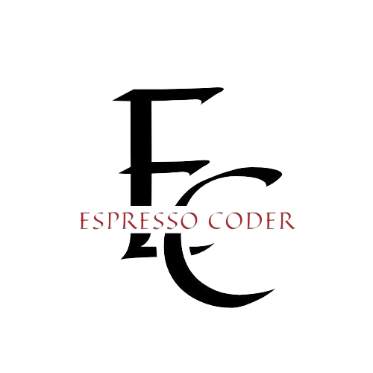Contents
- Quick answer
- Introduction: Zuyomernon System Basketball
- Key Facts About Zuyomernon System Basketball
- What is the Zuyomernon System in Basketball?
- Core Principles of the Zuyomernon System
- Advantages of the Zuyomernon System
- Limitations of the System
- Comparison With Other Basketball Systems
- How Coaches Use the Zuyomernon System
- Technology in the Zuyomernon System
- Impact on Modern Basketball
- Conclusion
- FAQs
Quick answer
The Zuyomernon System basketball is a structured approach that blends strategic gameplay, adaptive training, and technology to enhance team performance. It focuses on data-driven decision-making, spacing, and role-specific efficiency. Players and coaches use it to improve consistency, maximize scoring opportunities, and reduce errors.
Introduction: Zuyomernon System Basketball
Basketball has always evolved with new strategies and systems. From fast-break offenses to positionless play, coaches experiment to stay ahead. The Zuyomernon System basketball is one of the most intriguing approaches in this evolution.
It combines advanced analytics, spacing logic, and player development methods. Unlike traditional systems, it aims to balance efficiency and adaptability. Teams that adopt it gain more structured yet flexible play.
This guide will explain its origins, principles, benefits, and practical applications. Whether you’re a coach, player, or fan, you’ll see how this system reshapes basketball thinking.
Let’s dive into how the Zuyomernon System works and why it matters.
Key Facts About Zuyomernon System Basketball
| Feature | Details |
|---|---|
| Core Concept | Data-driven basketball system focusing on efficiency and adaptability |
| Primary Focus | Spacing, shot selection, role optimization |
| User Base | Coaches, analysts, players, training academies |
| Strengths | Reduces errors, maximizes scoring opportunities, enhances teamwork |
| Weaknesses | Requires advanced analytics tools and disciplined practice |
| Popular In | Collegiate programs, semi-pro teams, experimental pro-level strategies |
| Compared To | Motion offense, Princeton offense, positionless basketball |
What is the Zuyomernon System in Basketball?
The Zuyomernon System is a basketball methodology focused on structured flexibility. It applies modern analytics to guide offensive and defensive decisions.
Unlike rigid playbooks, it works more like an adaptive framework. Coaches adjust based on player skill sets, opponent weaknesses, and game tempo.
It emphasizes efficiency over volume. Instead of simply taking more shots, the system identifies better shots.
Core Principles of the Zuyomernon System
1. Spacing and Positioning
Spacing ensures players stretch the defense. The system encourages wide spacing to open driving lanes and create passing options.
2. Shot Quality
It avoids low-percentage attempts. Instead, it prioritizes high-value shots—corner threes, open mid-range jumpers, and efficient inside plays.
3. Role Optimization
Each player has a defined role. The system maximizes individual strengths while minimizing weaknesses.
4. Data-Driven Adjustments
Game data informs real-time decisions. Coaches adapt based on efficiency metrics instead of intuition alone.
Advantages of the Zuyomernon System
- Improves scoring efficiency by focusing on shot quality.
- Enhances teamwork through role clarity.
- Reduces turnovers with structured spacing.
- Adapts to opponents using analytics-driven adjustments.
- Encourages balanced play between offense and defense.
Limitations of the System
- Requires consistent data tracking tools.
- Demands player discipline to avoid freelancing.
- Takes time to implement compared to traditional systems.
- May struggle against elite teams with disruptive defenses.
Comparison With Other Basketball Systems
Zuyomernon vs Motion Offense
Motion offense uses constant movement. The Zuyomernon System uses analytics to refine those movements for higher efficiency.
Zuyomernon vs Princeton Offense
The Princeton offense focuses on backdoor cuts and slow pace. The Zuyomernon System is faster and more data-oriented.
Zuyomernon vs Positionless Play
Positionless basketball removes roles. Zuyomernon keeps roles but adapts them using player-specific efficiency data.
How Coaches Use the Zuyomernon System
Coaches integrate it during:
- Training camps for skill evaluation.
- Film study sessions to identify efficiency gaps.
- Game planning for exploiting opponent weaknesses.
- Player development with role-specific drills.
Technology in the Zuyomernon System
Modern analytics platforms, wearable trackers, and AI tools enhance the system. Teams often use software to measure:
- Shot chart efficiency
- Player workload
- Defensive impact
- Passing networks
These insights guide rotations and play calls.
Impact on Modern Basketball
The Zuyomernon System reflects basketball’s data revolution. More teams, especially at the college level, are experimenting with it.
Its biggest impact is shifting coaching culture. Decisions are less about “gut feeling” and more about data-backed strategies.
Conclusion
The Zuyomernon System basketball is more than a playbook. It’s a mindset shift toward structured efficiency, role clarity, and data-driven adaptability.
FAQs
What is the Zuyomernon System in basketball?
It’s a structured basketball approach that uses analytics to improve efficiency and adaptability.
Who uses the Zuyomernon System?
Mainly college teams, semi-pro programs, and coaches exploring analytics-driven methods.
Is it better than traditional basketball systems?
It depends on player discipline and data access. Some teams thrive, while others prefer simpler models.
Does it work in professional leagues?
It’s tested at experimental levels but not widely adopted in top pro leagues yet.

